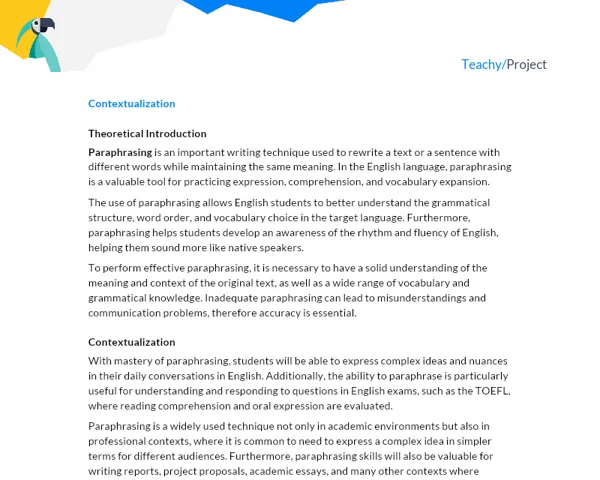Contextualization
English is a global language and, therefore, it is important to learn not only basic words and phrases, but also vocabulary related to different professions. This is because, in the future, many of you may work in an international environment, with people from different countries and cultures. Also, even if you do not become language professionals, knowing these words will give you a broader understanding of the world around us.
Introduction
In this project, we will dive into the fascinating universe of professions. Have you ever stopped to think about how many professions there are and what they are called in English? Let's find out together!
The vocabulary of professions in English is very vast and can vary according to the country and culture. However, there are some professions that are common to all places, such as doctor, teacher, engineer, police officer, among others. Learning these words in English will give you the ability to communicate and better understand the world around you.
In addition, we will learn about the different skills and tasks that each profession involves. For example, what does a doctor do? And a teacher? And a firefighter? Finding out the answers to these questions will not only improve your English vocabulary skills, but will also broaden your knowledge about the world of work.
So, let's embark on this adventure together? Get ready to discover new vocabulary, learn about different professions and, of course, improve your English skills!
Practical Activity
Activity Title: Discovering Professions
Project Objective:
The objective of this project is for students to learn and practice the vocabulary of professions in English, as well as develop communication skills, collaboration, time management and problem solving.
Detailed Project Description:
In this activity, students will research, create and present a "Book of Professions". Each group of students will be responsible for choosing five professions and creating a page for each one of them. Each page should contain the name of the profession in English, a brief description of the profession, and illustrations that represent the tasks and responsibilities of the professional.
Materials Required:
- A4 paper or cardstock for the pages of the book.
- Colored pencils, markers, crayons for illustrations.
- English dictionary (can be online).
- Scissors and glue.
- Computer or Tablet with internet access (for research).
Step by Step:
-
Group formation: Split the class into groups of 3 to 5 students. Each group will be a "research team" responsible for creating their own "Book of Professions".
-
Choosing the Professions: Each group must choose five professions that they want to learn in English. They can use the dictionary or the internet to find out what these professions are called in English.
-
Research: With the list of chosen professions, students should research about each one of them. They should find out what each profession does, what are their responsibilities and necessary skills.
-
Creating the "Book of Professions": Now it's time to get your hands dirty! Each group will create their "Book of Professions". They should use the A4 paper or cardstock to make the pages of the book. On each page they should write the name of the profession in English, the description of the profession and draw illustrations that represent the tasks and responsibilities of the professional.
-
Review and Editing: After finishing creating the pages of the book, students should review all the content to make sure that everything is correct. They can use the dictionary or the internet to check if the words are spelled correctly.
-
Presentation of the "Book of Professions": Finally, each group will present their "Book of Professions" to the class. They should explain each profession, their tasks and responsibilities in English. Students can also ask questions to the other groups about the professions they researched.
Delivery Format:
The "Books of Professions" must be delivered in a physical format, that is, the pages of the book must be printed and assembled to create a book. Students should also make the oral presentation of the book to the class. One copy of the book should be delivered for each group.
Important reminder: The goal is to learn and have fun! Therefore, encourage creativity and collaboration among students throughout the process. Good work, class!


